Executive summary
The Quantumrun Foresight Platform (QFP or Platform) features a Scenario Composer project interface that can guide and partially automate your team’s scenario planning process in a manner that incorporates a comprehensive range of emerging trends. The practical use of this project interface is to serve as a tool to efficiently segment and cross-analyze the bookmarked trend content curated inside your lists. The insights gained from this analysis can then fuel the creation of a business or environmental scenarios using your team’s preferred scenario methodology.
Challenge to solve
78% of the companies we surveyed failed to effectively incorporate emerging trends into their strategic planning initiatives. As a result, these companies faced increased exposure to risk from outside disruption and lost revenue due to missed market opportunities.
Solution
Use our platform’s Scenario Composer project interface to visualize, test, and understand trend insights across infinite variable combinations to develop comprehensive scenarios that inform and guide strategy and product ideation outcomes.
Value of scenarios in your strategy development workflow
Scenario planning, particularly as performed within the strategic foresight field, provides organizations with improved preparedness for the different business environments they may experience in the near and distant future. More specifically, scenario planning provides organizations with a method to systematically explore the possible, plausible, and probable futures (business environments) that lie ahead but with the ultimate goal of selecting one preferred future to pursue strategically. The graph below illustrates examples of the different futures (scenarios) that the strategic foresight field attempts to define.
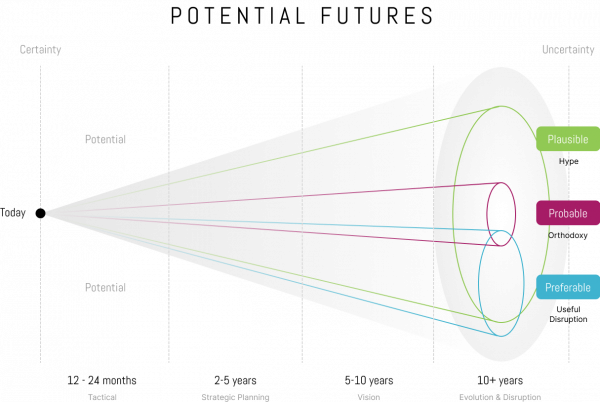

Under this framework comes the process of actually brainstorming and building multiple potential scenarios that organizations can then assess, rank, and then use to either guide their strategic planning or their product development processes.
Considering a comprehensive set of factors for your scenarios
These scenarios can be constructed in numerous ways. But regardless of the method used, for these scenarios to have practical value during the strategy or product development cycle, their construction must target for a comprehensive and realistic representation of reality—that means creating different versions of future business or operating environments that take into account a wide range of potential variables.
For example, the STEEPLED Framework (Sociocultural, Technological, Economic, Environmental, Political, Legal, Education, and Demographic) encourages teams to develop scenarios for their industry, country, or company by looking at what key factors could most impact their future state.
Possible examples of these factors include:
- Social: Changing lifestyle trends; social movements; emerging norms.
- Technological: Competing technologies; productivity changes.
- Economic: Interest rate changes; inflation; consumer demand.
- Environmental: Regional and global climate changes.
- Political: Changes in tax laws; trading relationships; grant changes.
- Legal: Changes in regulations; employment laws.
- Education: Rates of graduation per field or profession; evolving industry training needs.
- Demographic: Shifting population composition by age and race.
You can perform trend scanning exercises beforehand to help you identify these key factors or you may perform trend scanning exercises the factors are identified. The aim of these trend scanning exercises is to secure news articles, reports, or data that provide the necessary current and future context about these selected factors—fortunately, the QFP automates much of this trend scanning process for your team.
Methods for scenario development
Once your team collects a comprehensive list of key factors to consider, the next step is to select a preferred method to apply these factors within the composition of various scenarios. Your team can employ multiple methods or just one to build these scenarios, often depending on the organization’s size, resources, time, data at hand, and comfort level with the methodologies used.
Four of the more popular scenario development methods in the strategic foresight discipline include (from the simplest and easiest to perform to the most difficult and time-consuming): The Futures Wheel, 4 Archetypes, 2×2, and the Delphi method. The Scenario Composer is an additional scenario development method that we will describe at the end.
The Futures Wheel is a brainstorming method of visually organizing thoughts and questions about the future. Participants use a particular topic, event, question, or trend to inspire and analyze the relationships and consequences that may be related to the featured topic. Interconnecting lines make it possible to visualize interrelationships of the causes and resulting first, second, and third-order changes/consequences.
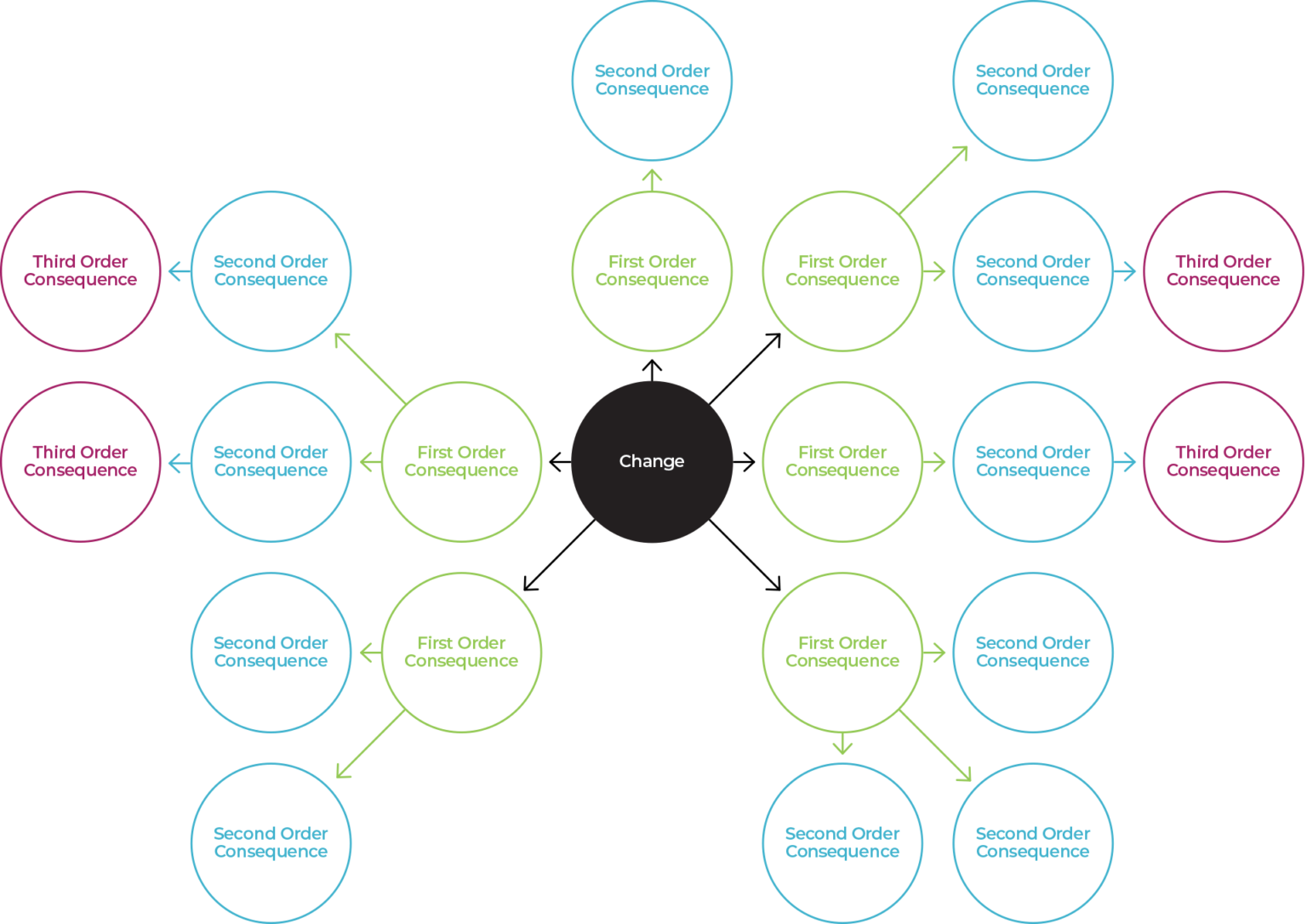

- To start a futures wheel, the central topic is positioned in the center of the page.
- Related topics, events or consequences stemming from that topic are positioned around it.
- The (indirect) consequences of the direct consequences are positioned around the first-level consequences.
- The consequences may be connected as nodes in a tree or web pattern.
The 4 Archetypes method creates scenario narratives through four steps:
- The team will identify the driving forces of change affecting the future using the content provided on the QFP. Driving forces (like the ‘key factors’ explained earlier) are trends and phenomena (like technological and social changes) in the environment that, due to their recurring nature, have a consistent effect on the future.
- Next, we apply a value to each driving force to determine their direction. For example, is Trend A expected to grow or contract over the coming years? Become more or less expensive? Become more or less popular/accepted?
- The team then interprets the driving forces’ behavior within the four predetermined archetypal narratives: continued growth, collapse, discipline, and transformation.
- Continued growth is a scenario that forecasts the continuation and enhancement of the current direction of events and/or of current problems—similar to a continuation of ‘business as usual,’ but with the expected growth/contraction of known trends.
- Collapse is a scenario where the future system reaches its limit and collapses.
- Discipline is a scenario that describes a future state of equilibrium and sustainability.
- Transformation is a scenario that describes a radical departure from the present due to a transformative trend or event, disrupting the very nature of current norms and ways of life (to positive or negative outcomes).
- Remember: The team must interpret the behavior of the driving forces for each archetype by asking the question: “How would the set of driving forces identified behave, together, if this narrative were to occur?”
- Finally, the team will write long, plausible, comprehensive scenario narratives based on the above interpretations of each archetype—produced not just by the imagination of the participants, but with each narrative conjecture supported with references from outside sources.
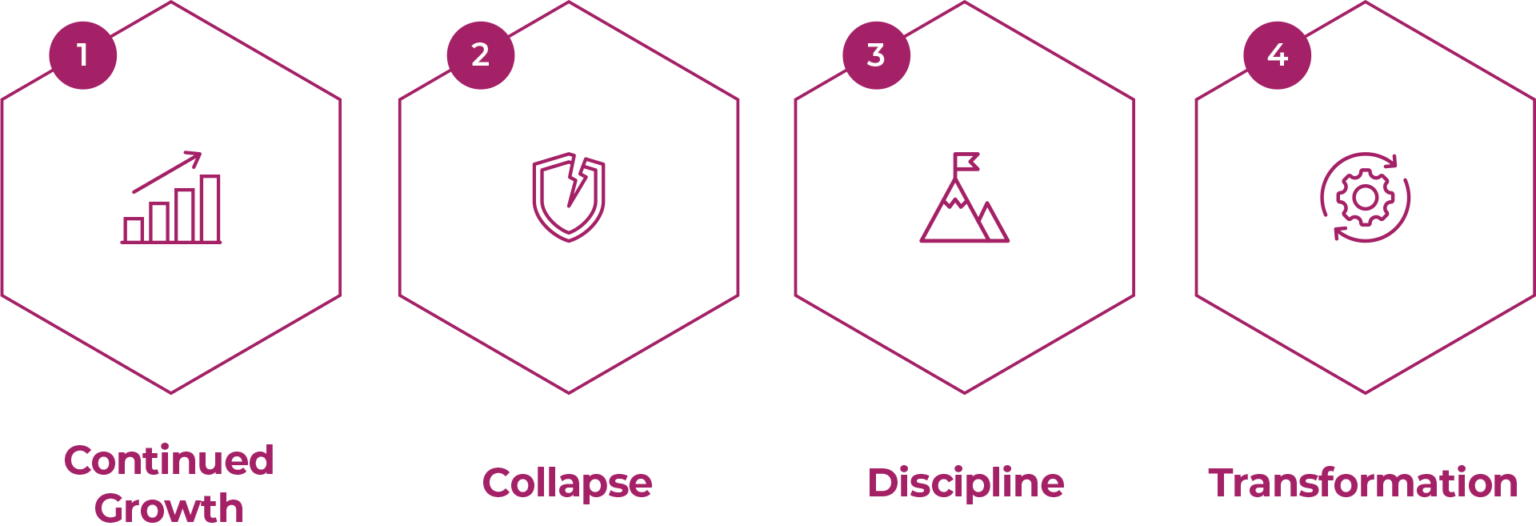

Another scenario method is the 2 x 2 matrix, with each scenario describing four headlines about plausible futures, based on the observable past and present. The headlines your team generates can reveal opportunities and risks that may help your team prioritize strategy and product decisions. This method involves six steps:
Step 1: Identify the driving forces (explained in the previous method) affecting the future through trend research, using the QFP, or in a workshop. Ideally, your team is trying to identify driving forces (i.e. external uncertainties or disruptive changes) that you have no direct control over; reference the STEEPLED Framework explained above.
Write a list of driving forces and then write the opposing values for each force.
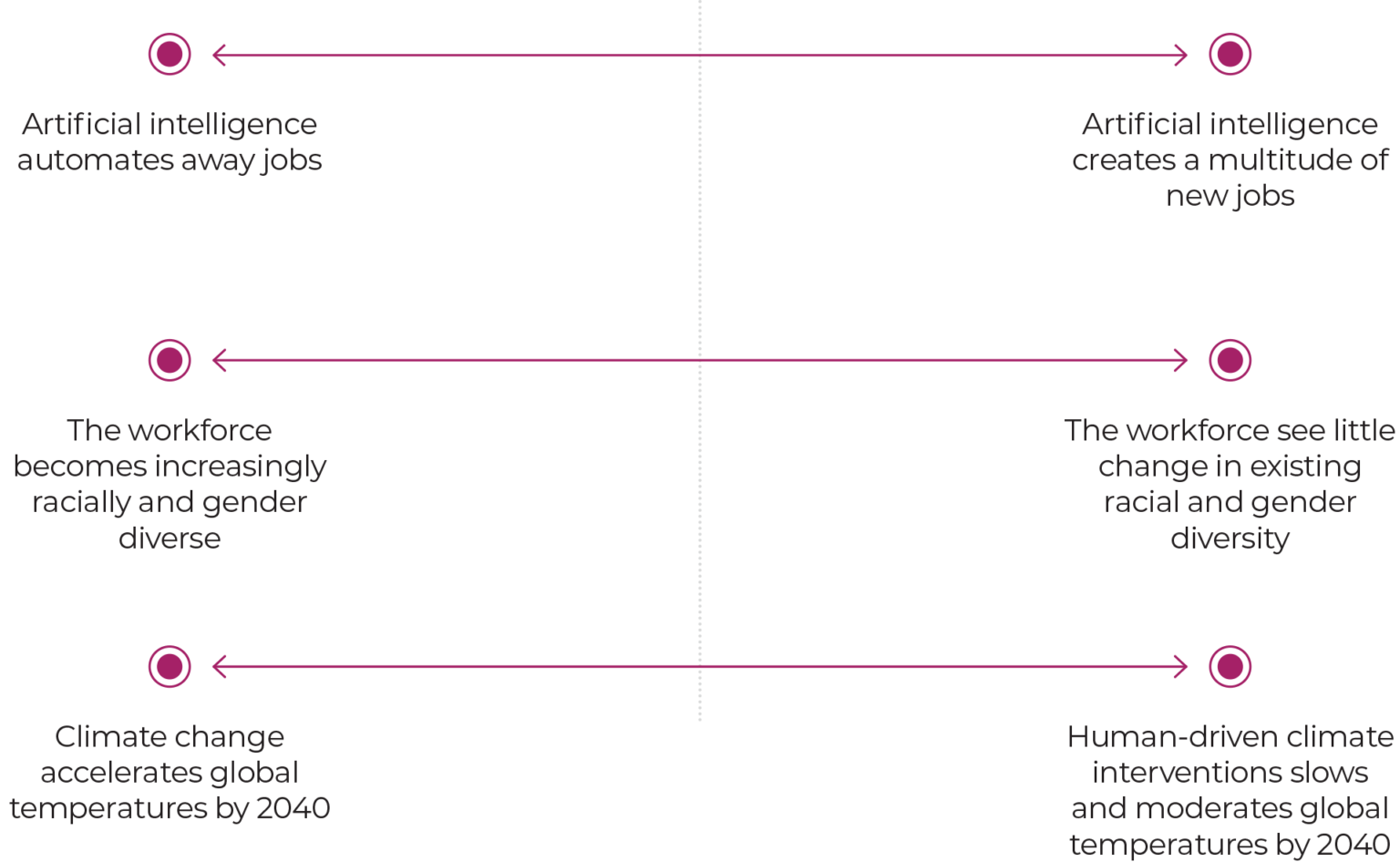

Step 2: As your team writes these driving factors (with their opposites), try to cluster or categorize them into similar themes in a format similar to this example:
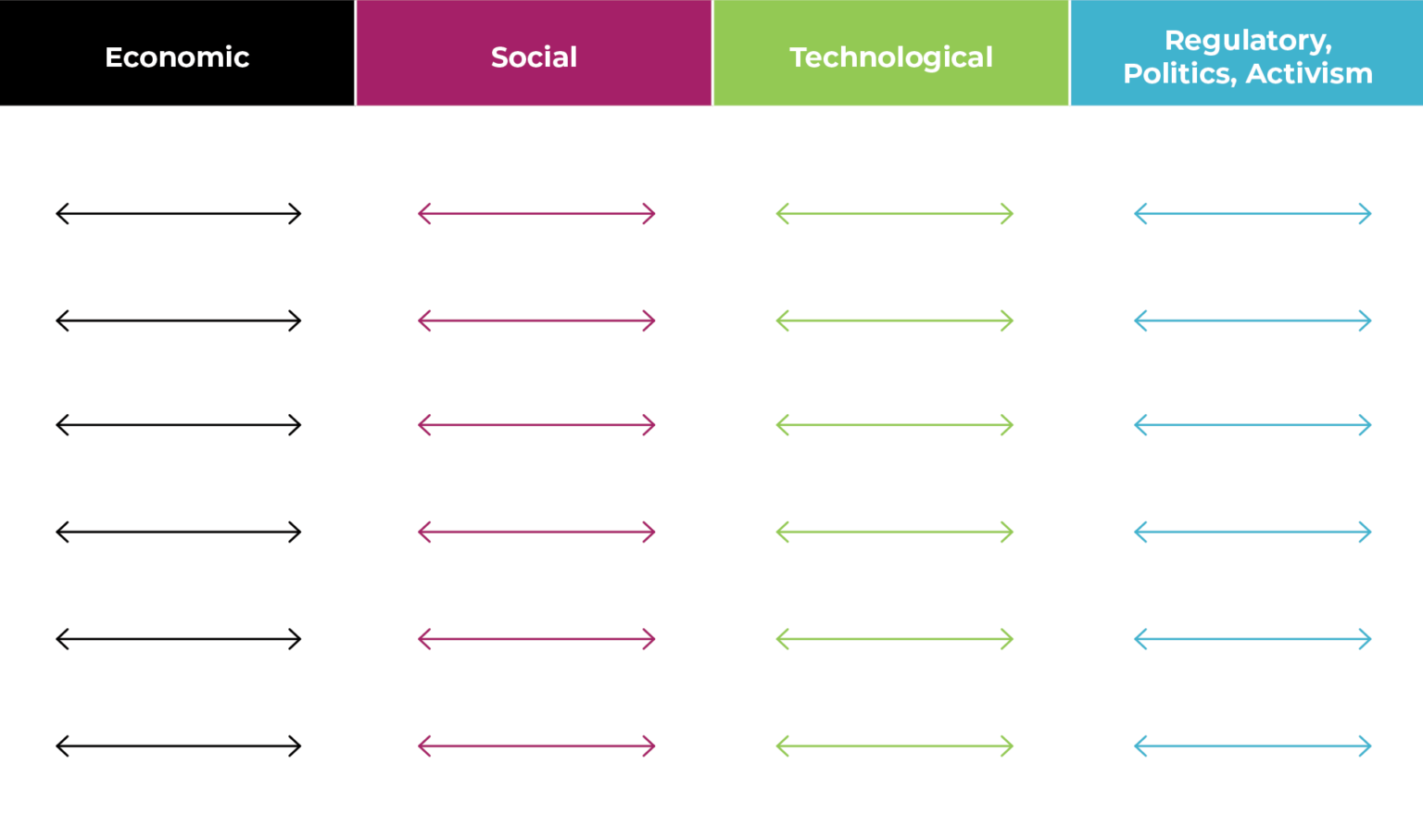

Step 3: Rank each factor from each cluster by two measures, impact and probability (you can do this inside the Scenario Composer as well), with the goal of selecting the most worthwhile factors to explore further.
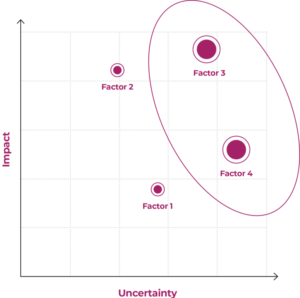

Step 4: Take the highest ranking factors from different clusters/categories and place them against each other on opposing axes; see example:
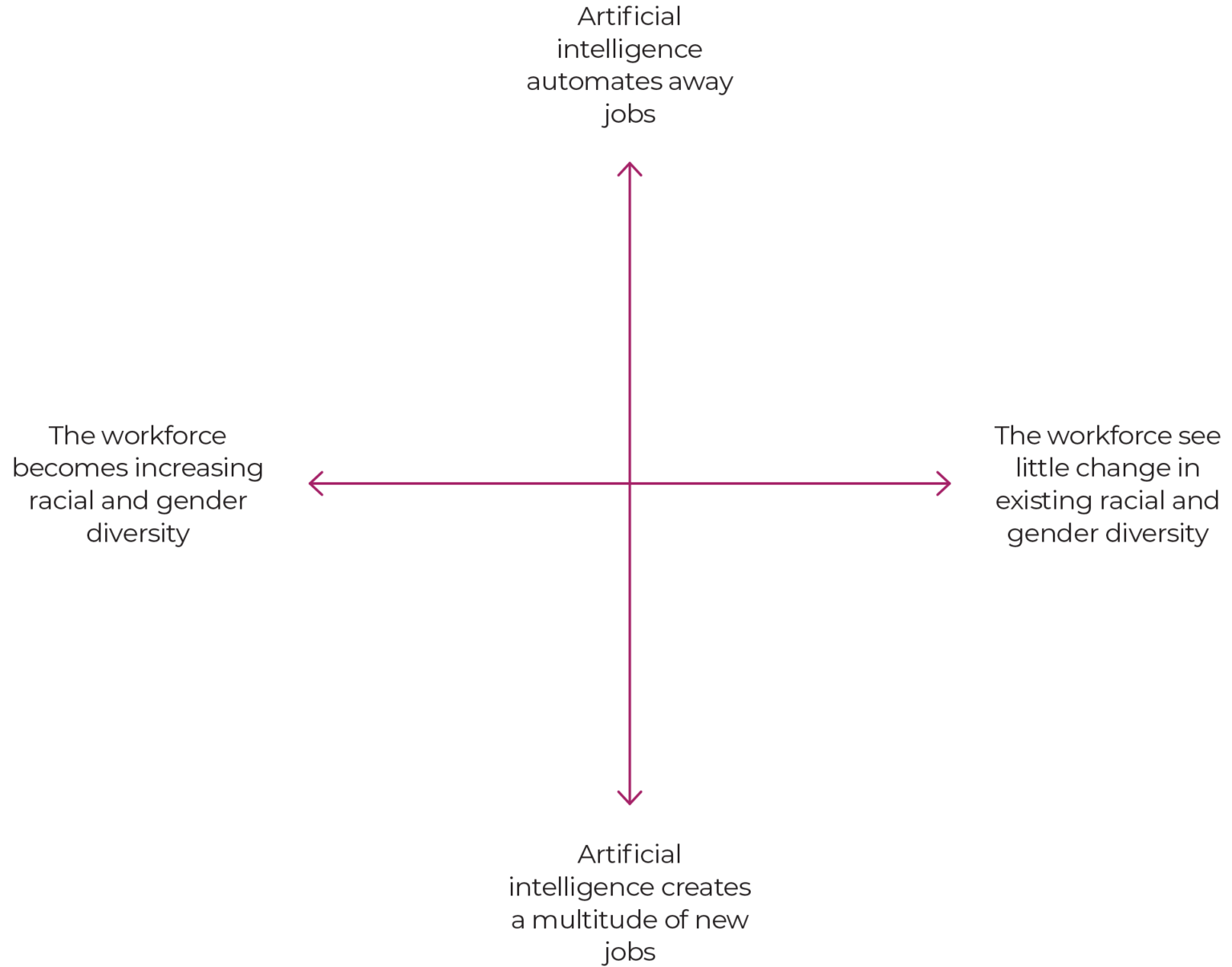

Tip: Try to combine as many different variations of factors to discover a broader range of potential scenarios.
Step 5: For each of the four quadrants of the 2×2 matrix of factor combinations, write a headline describing a possible future state should those two factors happen. Aside from the simplified example below, aim to write a descriptive headline, plus 2-3 sentences with detailed information.
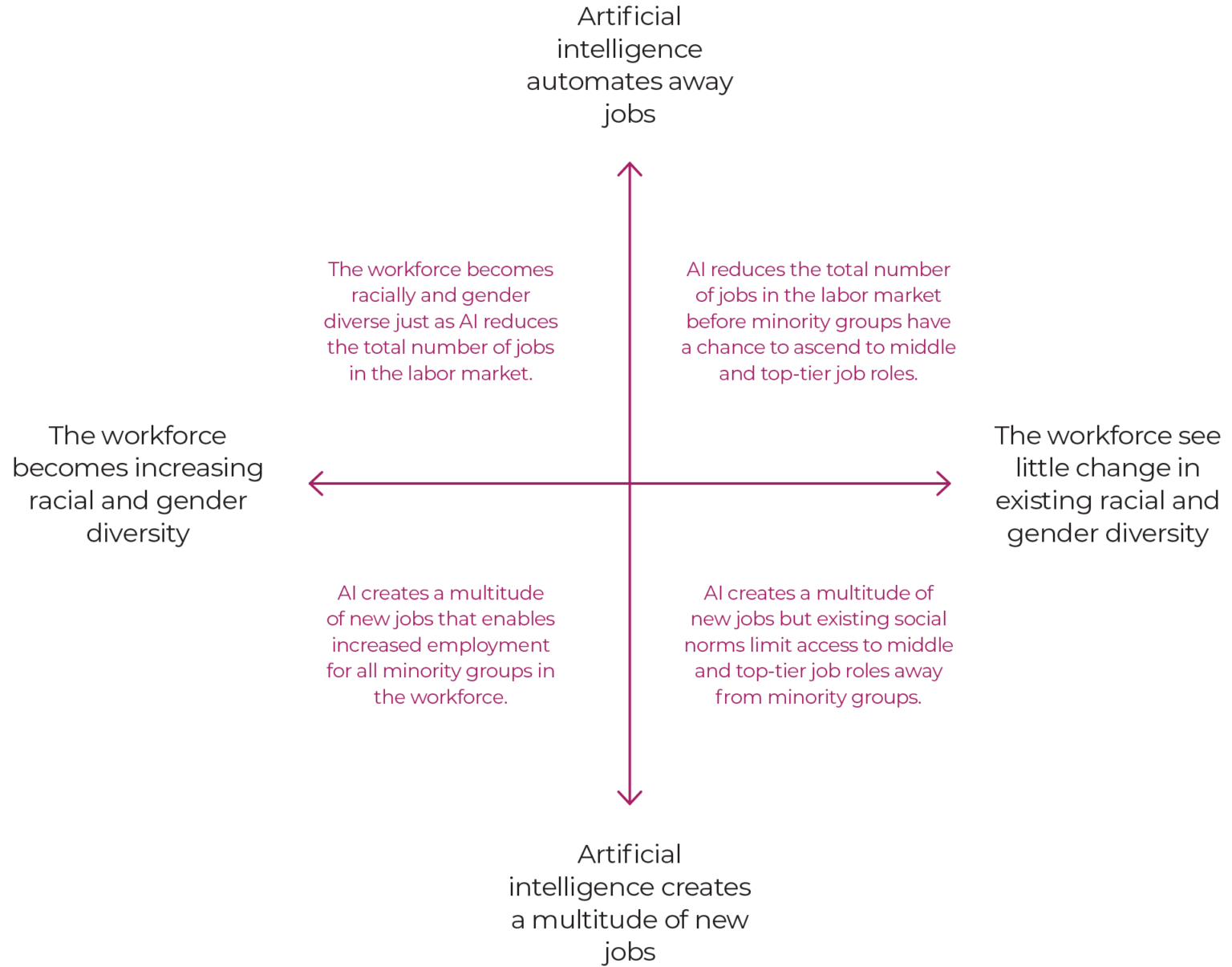

There is not a set number of matrix combinations that your team has to write. Produce as many as needed to form a comprehensive vision of possible future states impacting your organization’s operations.
Some practitioners also take the additional step of labeling each matrix quadrant to help you prioritize how your organization may respond to each potential quadrant headline. These labels can include:
- Near-term Opportunity.
- Long-term Opportunity.
- Near-term Risk.
- Long-term Risk.
- Existential Risk.
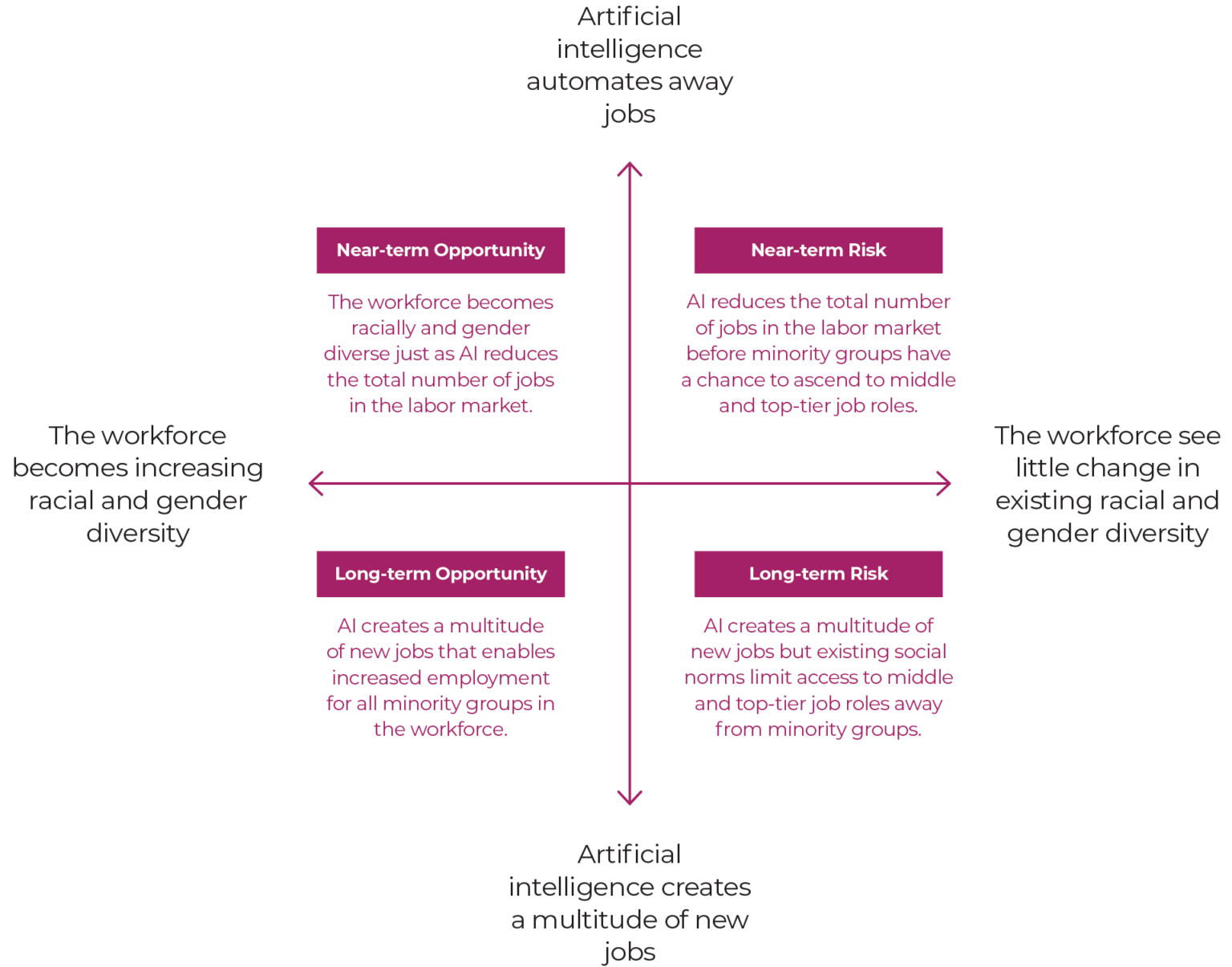

Step 6: Finally, your team will write long, plausible, comprehensive scenario narratives based on the possibilities discovered within the range of the matrix generated. For each scenario narrative, be sure to incorporate each of the driving forces identified in earlier steps. At the end of the scenario, including an examination detailing how your organization may act, benefit or adapt to the realities the scenario narrative outlines. This exercise can help your team with effective strategy planning, alongside the system available within the QFP’s Strategy Planner project type.
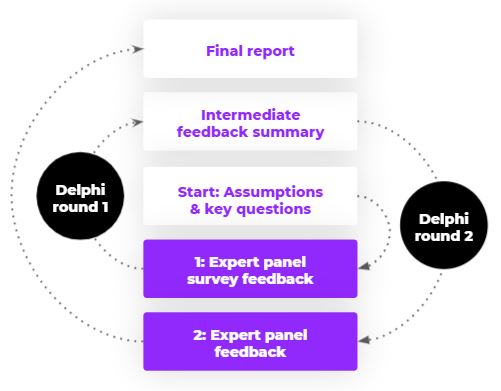

The Delphi method is a structured communication technique, originally developed as a systematic, interactive forecasting method that relies on a panel of experts. Similar to facilitating focus groups, the Delphi method is based on the principle that forecasts (or decisions) from a structured group of individuals (ideally subject matter experts) are more accurate than those from unstructured groups. The method follows this general process:
- The experts answer questionnaires about future topics, trends, or scenarios in two or more rounds.
- After each round, a facilitator (or change agent) prepares an anonymized summary of the experts’ answers/forecasts from the previous round, as well as the reasons each expert provided for their judgments.
- At the start of the following round, the experts review the summary of the previous round and are then encouraged to revise their earlier answers in response to the replies from the other members of their panel.
- Ideally, during this iterative process, the range of the answers will decrease and the group will converge towards the “correct” consensus answer/forecasts regarding the initial core topic being researched.
- The process is ended after a predefined stop criterion (e.g., number of rounds, achievement of consensus, stability of results, etc.), with the mean or median scores of the final rounds determining the results.
Tip: If your organization does not have sufficient subject matter experts internally, you can tap into Quantumrun’s broad BrainTrust network of diverse subject matter experts and strategic foresight professionals. Contact your Quantumrun Foresight client success representative to learn more.
Method selection
Regardless of the scenario creation method used, the end goal is to generate (at the very least) a comprehensive best-case scenario, worst-case scenario, and a reasonable-case scenario that you can structure your strategy or product development process through. Meanwhile, for larger organizations with more time and resources, the end goal may be to create dozens of scenarios to inform your upcoming initiatives.
Review the various options and choose the one that feels easiest for your team or let a Quantumrun Foresight consultant assist you with the process.
Applying the Scenario Composer to scenario creation
Regardless of the scenario creation method(s) chosen for your organization, the QFP can help streamline scenario development in numerous ways.
- The QRP’s trend curation interface features thousands of current and emerging trends and insight signals for a massive variety of industries, professions, countries, topics, and more. New signals are added to the platform each week. More important, our advanced filtering system and human curators will enable your team to distill the platform’s mountain of trend intelligence into organization-specific insights that can:
- Inspire new organizational goals or objectives.
- Identify new opportunities or threats to prepare for.
- Guide your team toward specific research objectives to support your emerging strategy.
- Build well-rounded and informed scenarios.
- (This trend curation interface shares many of the same elements as the Futures Wheel method described earlier.)
- Once your team has curated a collection of trends and insights from our trend curation interface, you can then apply them to our Scenario Composer project interface. Here, the Scenario Composer will guide your team to collaborate and prioritize the trends and insights for your organization—the results can feed your team’s 4 Archetypes or 2×2 matrix exercises.
- The Scenario Composer will then enable your team to segment the insights using nearly two dozen variables, in hundreds of possible variations. Each variation will then be displayed graphically to help your team visualize potential business scenarios—the visualizations can also feed your team’s 4 Archetypes, 2×2 matrix, or Delphi exercises.
How to use the Scenario Composer
To learn about the various features of the Scenario Composer project interface, please click here.
To learn tips and tactics about how to effectively use the Scenario Composer project interface, please click here.
To learn more about the methodology behind the Scenario Composer project interface or start your free trial of the platform, please contact a Quantumrun Foresight representative at Platform@Quantumrun.com.



